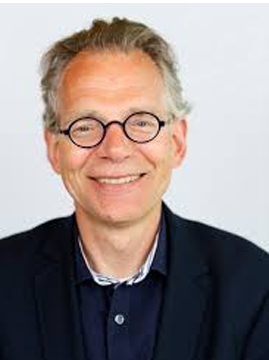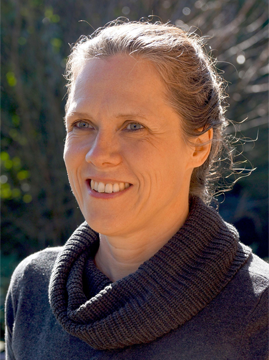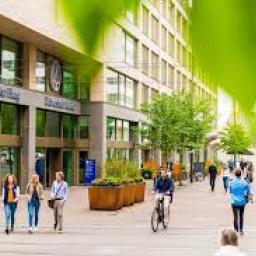What does the future of the port city of Rotterdam look like? How do you maintain the identity of a city in transition, with a growing number of inhabitants, spatial, economic and political interests? For whom does the gentrification of a neighbourhood take place? These are some of the questions studied by the researchers of the Leiden-Delft-Erasmus PortCityFutures programme.
PortCityFutures is an initiative launched by the Leiden-Delft-Erasmus university alliance and brings together a highly engaged, multidisciplinary international community of researchers, concerned with culture, planning, urban planning, anthropology, history, economics, etc. The group examines the spatial impact of competing interests among port-related and urban spatial development needs and timelines.
The story of Deliplein, Katendrecht, Rotterdam
In this video, PortCityFutures researchers Prof. Dr Carola Hein from the Delft University of Technology, Prof. Paul van de Laar of Erasmus University Rotterdam and Dr Sabine Luning of Leiden University, take you to the Deliplein in Rotterdam and show you how it has been successfully transformed into a hotspot in the modern Katendrecht through gentrification.
Port city regions are places where a large industrial area connects with both urban and rural spaces — yet ports, cities, and regional governments may not necessarily share the same goals. Differences in economic interests, technological capacities, knowledge, or income in a port city can lead to environmental and social injustice and opposition to the port’s functions. We believe there is a need to look at new ways to govern and plan port cities: not only at the waterfront or where the port meets the city, but throughout the surrounding region.

From staple port to transit port
Such an approach is highly relevant also for Rotterdam, as port and city have separated over the last decades. Many local stakeholders will agree that the ongoing multiple transitions—energy, migration, or IA —require awareness of mutual needs and interests that often intersect in the same space. The port of Rotterdam has evolved from a staple port to a transit port and is now looking for a new narrative. Similarly, the city and the regions are looking for a new perspective, one where shipping and water play a key role for climate-change resilient development.
‘Trade follows ideas, so we brought the passengers towards the United States, and we brought the ideas from the United States back to Rotterdam’

PortCityFutures argues that we need to acknowledge the long-standing relationship between port, city, and region of Rotterdam and its specificities, in a positive and negative sense. As Paul van de Laar states on the Wilheminapier: 'Trade follows ideas, so we brought the passengers towards the United States, and we brought the ideas from the United States back to Rotterdam. A lot of the ideas on modernization were actually important through these major shipping lines.'
Like other cities with major waterfront revitalization activities, Rotterdam is witnessing the gap between cosmopolitan aspirations boosted by international capital and symbolic waterfront architecture and the daily struggle for recognition by hyperdiverse populations inhabiting the urban fabric. Redevelopment projects of former waterfront port areas, such as Lloyd Quarter, RDM and M4H stand as an example. Like other cities with major waterfront revitalization activities, the question rises whether Rotterdam’s efforts are widening the socio-economic gap between diverse neighbourhoods and gentrified port-city redevelopment projects, and what this means for social and economic justice.
‘We need the industry and the ports, but we have to rethink it in a way that is positive, also for the people who live next to it’
Ports searching for a new perspective

Learning from the past also means recognizing hindrances. The port of Rotterdam has long floated on oil, as Carola Hein states 'We need the industry and the ports, but we have to rethink it in a way that is positive, also for the people who live next to it'. This oil legacy 'the Dutch petroleumscape' as she phrases it, shapes our engagement with future energy landscapes. Recognizing the potential limitations of historic practices is needed for future innovation.
Almost all decisions taken with a view to the future are a challenge for the city, port and the region. Together, they depend on the development of a shared vision. Such a vision needs to go beyond technological interventions to include recognition and development of shared spaces, shared governance and shared culture. The cultures and the shared values between stakeholders in port cities need to be better understood. This will help when devising suitable strategies for future port city regions in Europe, as well as internationally.

Port City Research
The series of short PortCityFutures films explains the perspectives of scientific research and how our research questions are related to the physical spaces of ports and cities. Our starting point is Rotterdam. We visit important locations in the port city region and show diverse projects from Wilhemina pier to the recent revitalization projects on the waterfront.
Watch it here
Leiden-Delft-Erasmus Talks
During the LDE Talks, Carola Hein and Paul van de Laar will discuss the particular challenges that port city regions are facing, the needs for recognition of the impact of long-term development, multi-stakeholder collaboration and multi-scalar design.
LDE Talks


